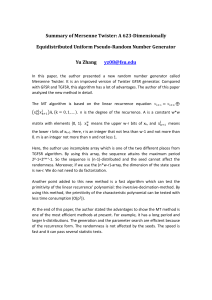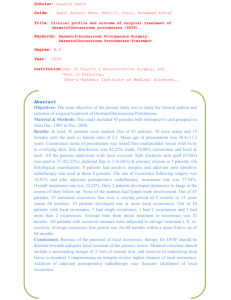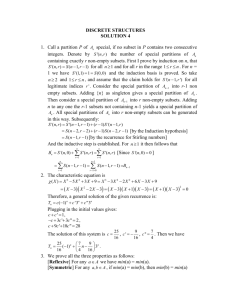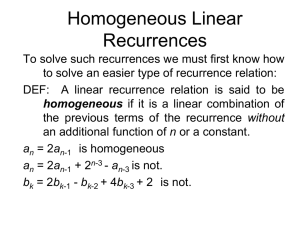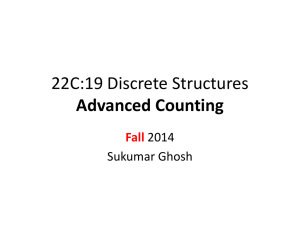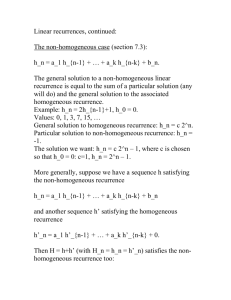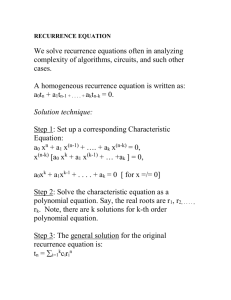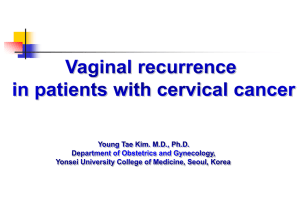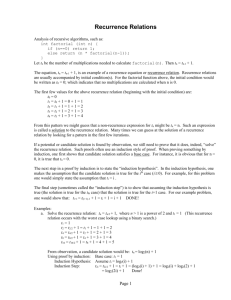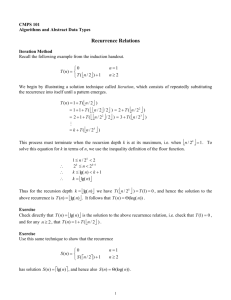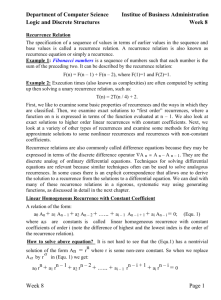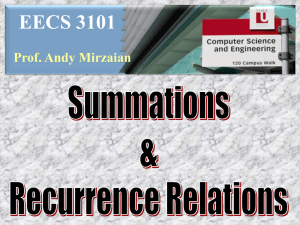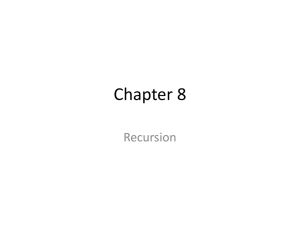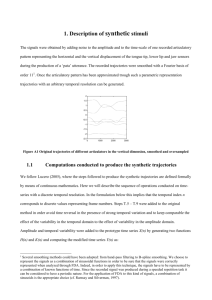ppt - People Server at UNCW
advertisement
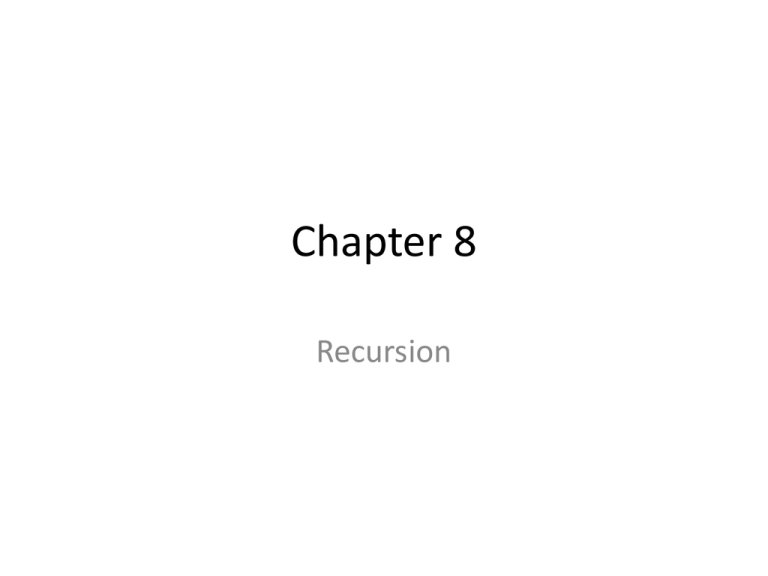
Chapter 8 Recursion 8.3 More Recurrence Second-Order Recurrence • Definition – A second-order linear homogeneous recurrence relation with constant coefficients is a recurrence relation of the form, ak = Aak-1 + Bak-2 for all ints k ≥ some fixed int, where A and B are fixed real numbers and B≠0. – This is called a second order because expression is based on the previous two terms (ak-1 , ak-2). – Its linear ak-1 , ak-2 are separate terms of the first order. – Homogenous because are terms are of the same order. – Constant coefficient b/c A and B are fixed real numbers that do not depend on k. Example • State whether each is a second-order linear homogenous recurrence relation. • • • • • ak = 3ak-1 + 2ak-2 bk = bk-1 + bk-2 + bk-3 dk = d2k-1 + dk-1 * dk-2 ek = 2ek-2 f k = 2f k-1 + 1 Distinct Roots • Lemma 8.3.1 – Let A and B be real numbers. A recurrence relation of the form ak = Aak-1 + Bak-2 is satisfied by the sequence 1, t, t2, t3, … , tn, … where t is non-zero real number if, and only if, t satisfies the equation t2 – At – B = 0. Characteristic Equation • Definition – Given a second-order linear homogenous recurrence relation with constant coefficients: ak = Aak-1 + Bak-2 for all ints k≥2, the characteristic equation of the relation is t2 – At – B = 0 Example • Use characteristic eq to find solutions to a recurrence problem. – Consider recurrence relation where kth term of a sequence equals the sum of the (k-1)st term plus twice the (k-2) term. ak = ak-1 + 2ak-2 – Find all sequences that satisfy 1, t, t2, t3, … , tn, … – Solution • t2 – t - 2 = 0 • t2 – t - 2 = (t – 2)(t + 1), thus the values of t = 2, -1 • t can be: 1, 2, 22, 23, … , 2n OR 1, -12, -13, … -1n • This example demonstrates how to find two distinct sequences that satisfy a given second-order homogenous recurrence relation with constant coefficients. Single Root Case • Consider ak = Aak-1 + Bak-2 for ints k≥2, but consider that the characteristic equation t2 – At – B = 0 has a single root. • By Lemma 8.3.1 one sequence that satisfies the relation is: 1, r, r2, r3, … rn, … however another is: 0, r, 2r2, 3r3, … , nrn • To see this observe: t2 – At – B = (t – r)2 = t2 – 2rt – r2, A=2r B=-r2 • sn = nrn for all ints n≥0 • Ask-1 + Bsk-2 = A(k -1)rk-1 + B(k -2)rk-2 = 2r(k -1)rk-1 + -r2 (k -2)rk-2 = 2(k -1)rk - (k -2)rk = (2k – 2 – k + 2) rk = krk = sk Single Root • Lemma 8.3.4 – Let A and B be real numbers and suppose the characteristic eq t2 – At – B = 0 has a single root r. Then the sequence 1, r1, r2, … , rn, … and 0, r, 2r2, … nrn, … both satisfy the recurrence relation ak = Aak-1 + Bak-2 for all ints k≥2 Single Root • Theorem 8.3.5 – Suppose a sequence satisfies a recurrence relation ak = Aak-1 + Bak-2 for some real numbers A and B with B≠0 and for all ints k≥2. If the characteristic eq t2 – At – B = 0 has a single (real) root r then the sequence a0, a1, a2, … satisfies the explicit formula an = Crn + Dnrn where C and D are the real numbers whose values are determined by the values of a0 and any other known value of the sequence. Example • Suppose b0, b1, b2 … satisfies the recurrence relation bk = 4bk-1 – 4bk2 for all ints k ≥ 2 with initial conditions b0 = 1 and b1 = 3. Find an explicit formula for the sequence. • Solution – sequences is of second-order linear homogenous recurrence relation with constant coefficients (A=4 and B=-4). The single-root condition is also met because the characteristic equation t2 – 4t + 4 = 0 has a single root r = 2 ( (t-2)(t-2) ) – bn = C 2n + Dn2n – to find C and D use initial conditions • b0 = 1 = C 20 +D(0)20 => C = 1 • b1 = 3 = C 21 +D(1)21 => 2C + 2D = 3 (sub C = 1 from above) • 3 = 2(1) + 2D => D = ½ – Hence, bn = 2n + ½ n2n for all ints n≥2


